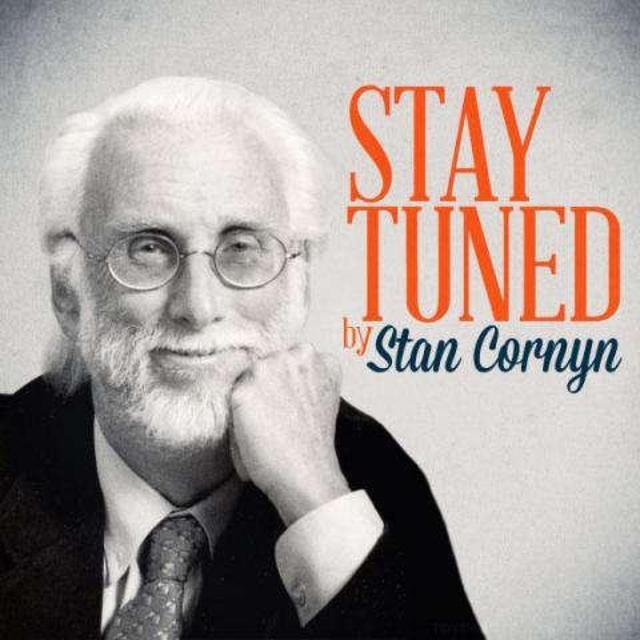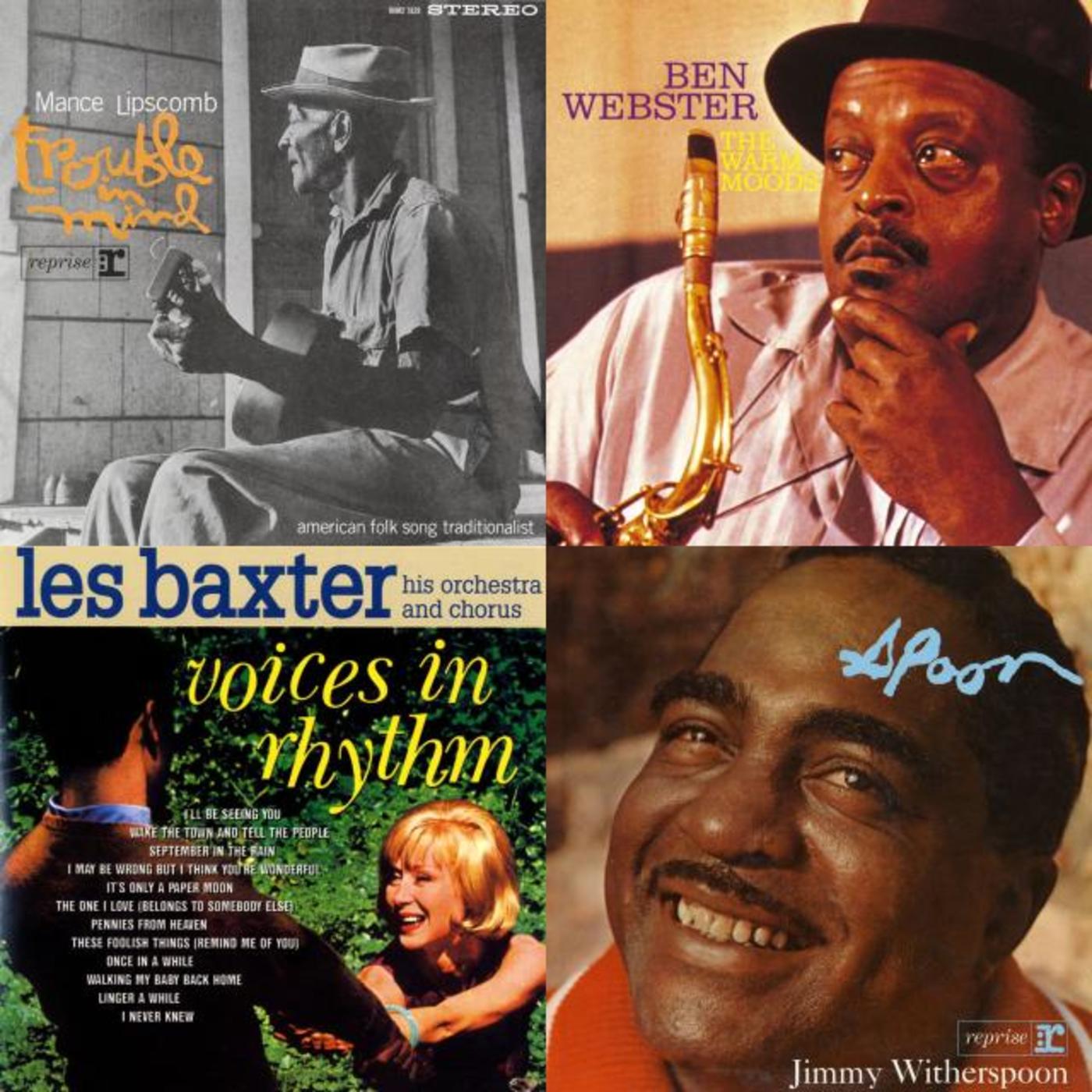Stay Tuned By Stan Cornyn: Burbank Moves To Vegas

Every Tuesday and Thursday, former Warner Bros. Records executive and industry insider Stan Cornyn ruminates on the past, present, and future of the music business.
With Reprise Records in Hollywood shut down tight, Frank Sinatra now had the choice to record either with the Burbank gang or the Las Vegas gang. He chose not to swing in Burbank, at least within the Warner Bros. Records shack. In fact, he seemed to have made up his mind never ever to enter the doors of Warner Records. Never to speak to its president, Mike Maitland. When Sinatra wanted something from Warner/Reprise, anything, he phoned Mo Ostin.
Even though Sinatra now owned 1/3 of Warner/Reprise, he always always phoned Mo.
Mo’s secretary, Thelma Walker, could be heard running down the hall to find Mo even in meetings, calling out to him, “Frank on Line Two.” And Mo’d excuse himself to take those calls.
So Sinatra had made his choice. Not Burbank, but Las Vegas. That’s where he’d swing best. Usually, at a tall, ritzy hotel named The Sands.
For some WBR employees, The Sands meant traveling up to a hot city they’d never much spent time in before. Neon had been banned in Burbank, it seemed, but now it and showgirls and roulette wheels and cabs-in-a-row and midnight snacks and lounge acts (Louis Prima and them), they were better than a Cheerio breakfast in Burbank. So, up Burbank’s music crowd would fly to Vegas, or some drive their Chevys, five hours, tingling all the way. A business trip … plus.
Basie and Q
Often up there to swing (not to rock, just jazz swing) like a big band, Frank's first choice in swing bands was Count Basie's Big one. Basie was getting on, now; already in his sixties in the sixties, having been born in Red Bank, New Jersey, back in 1904. He was still head of his band, but preferred to lead while sitting at the piano.
Some “youngster” employees at Warner/Reprise remembered with affection playing Basie 78s in their youths. He was a rebel-for-your-ears in the 1940s and 1950s. But this was the ‘60s, the age of both the LP and of Basie himself.
Basie and Sinatra had made a pre-Warner-era album together in 1962, conducted by Neil Hefti. But that was studio stuff, even though its full title was Sinatra-Basie: An Historic Musical First. Odd spelling of An over A, but … it was 100% Sinatra’s label, so…
Quincy and Basie
Two years later, it’s 1964, and Basie’s back, but now with Quincy Jones, the man at the podium for many Sinatra swing-fests. Q (as he’s nick-named) was then about 30 years Basie’s junior, but still one who knew the feel of big band ecstasy. But that album, It Might as Well Be Swing, that was another “studio recording.”
It wasn't until 1966 that Sinatra + Basie + Quincy + The Sands came together, all the elements afire. That album: Sinatra at the Sands. And if you had to pick one, this one had it all. It was “live” in every sense of that word.
How It Swung
To recapture how Basie-Sinatra-Q felt, Warner’s young liner notes writer got to fly up and write down what he saw. He was a bit geeky for the Vegas crowd at the Sands, but he dreamed about belonging with those swarthy Italian gamblers, the ones in the Casino who wore huge dark glasses. Even more, he loved being approached by the Sands’ cocktail girls who’d perfected their job: bringing him his (free) vodka tonic cocktail while leaning way over to set in front of him.
It felt Big Time up there (and down there), and the writer had learned to speak three magic words that worked: “I’m with Frank.”
The Copa Room
Show Time, and “I’m with Frank” had gotten him a table all his own in the Copa Room. There he scribbled notes that would tell album buyers what the audience that night saw and heard.
Then, he’d fly back to Burbank, to type up the truth for the back of the jacket. This:
“Sinatra at the Sands”
For a man so accustomed to appearing before the public, walking on stage this night at The Sands should have cause no more apprehension when you feel walking into your own living room.
Yet Sinatra prepared for this appearance with deliberate ritual. He tends his voice with care. He takes a steam in the late afternoon. He lays off cigarettes. Before going on stage, he works out with his accompanist, Bill Miller, for a half hour. He slips into his tailored tux, still warm from a valet's iron.
All during dinner, the audience-on-a-fling has been trying to catch the eye of the preoccupied staff, trying to flag down a captain. At the next table, a big mans asks if a $10 bill would get him a better table. Scurrying by, the captain sighs “$10,000 couldn’t get him a better seat.”
Tiny Sonny Payne, Basie’s drummer, perches up near the back of the bandstand, whirling his sticks and thrashing his cymbals and snares like the man who invented drums. Three lines of unbuggable horn and reed experts gaze down at their well-worn charts. They’ve been traveling with this sheet music for decades. Ask for “One O’Clock Jump” and they’ll bring out a sheet of music that looks like a hunk of Kleenex after a flu epidemic.
Mr. Basie begins to conduct his orchestra from a seated position, facing his Steinway, hearing his men movin’ without much visible motion. Mr. Cool, but you know he’d rather be doing this than anything besides breathing. Men like he and his men don’t go through the grinding one-nighters they’ve been through these past eons without some measure of dedication to something besides a buck. They do it because that’s their way of breathing. Their music shows it, for “One O’Clock Jump” to “All of Me,” instrumentals that lift the Sands crowd up to a pitch of romping appreciation. The lousy drinks, the lousier luck at the tables, the pneumonia air conditioning is all gone and forgot.
It happens because Mr. Basie does not consider himself no prelude to nothin! He comes on. He’s got ten quick minutes at the opening of the show that are all his and, by God, they’re his.
Forty years of music making jammed into ten prestigious minutes. During the applause, a dapper young man comes out on stage to adjust his music stand. He faces the Basie band. He’s Quincy Jones, a high-talent young man who could be making a lot more money arranging his own albums or scoring films. But he chooses to be on stage at The Sands, for the same reason everyone else chooses to be there. Because an event is about to happen.
An amplified voice lets them all know: “And now … a Man and His Music!”
The band ups to the occasion. And he walks on. Doesn’t gallop on, doesn’t wave or jump or hoopla.
During the introductory wailing of the Basie band, audience members jammed, perched, squoze to the side of the room can see an anxious figure peering out at the band from the stage wings. Catching the mood of the crowd, Frank Sinatra.
He just walks on. His pocket handkerchief folding in there nice. A bit of vest peeking out from under his tux coat. He pulls the hand mike out of the stand, glances up at the light booth where a thousand pounds of spotlight bear down on him. His shoulders hunch once, like they’re absorbing the beat of Basie. He turns back to Quincy, Count & Co., smiling, extending the vamp. Go. Sonny Payne whacks his drums to stir up more groove. Then Sinatra turns back and sings. It looks effortless, the way he lazily loops the mike cable through his relaxed hands. But his face shows what he’s singing. Eyes closed, head tilted, lips carefully phrasing.
And then he’ll change the pace on the audience.
While his excitement-sated audience of people who’ve been everywhere are just happy to be there, while everyone is forgetting who’s sitting in the next chair, or that down front there’s a row of celebrities running from Roz Russell to Yul Brynner, from Mike Romanoff to Judy Garland, Sinatra runs through his best. The songs are Sinatra’s, like “Come Fly,” and “Got a Crush” and “Fly Me to the Moon.” Hip, up-tempo, wailing things. In the middle, Frank takes a breather, or as he called it “Tea Time.”
And after an almost a dozen songs, Sinatra pauses. He pulls forward a stool and a music stand. He takes his tea. Ten, fifteen minutes worth of greeting. His status report on The Arts and The Sands. The audience is shifting in its chairs, knowing it has only 90 minutes maybe with Sinatra, loving him talking to them, hoping he won’t stop, and hoping he’s going to keep singing all that night.
And he does. “Don’t Worry ‘Bout Me,” “Where or When,” the audience increasingly with it, knowing they’ve never heard anything better.
And all the while, Quincy’s at one side, setting the beat; Count’s on the other, making the beat; and Sinatra’s center, demonstrating how wide and high the heart of a singing man can range.
Finally, “My Kind of Town,” starting deceptively with some talk about a nice city, then building choruses of mounting, modulating, upwards excitement.
And then he leaves. Walks right off that stage, just like he was finished. But does the crowd want that? They yell “no” and “more,” one more, ten more, hell a lifetime more, they’ve got nowhere to go, dammit they want more of him.
Mr. Sinatra comes back and bows, not too low, but appreciatively. He makes “the dullest speech you’ll ever have to listen to,” thanking them, not for this one hour but for a lifetime of applause. He reprises “My Kind of Town.” He does it with authority. Nobody follows that kind of finish, not even Frank Sinatra.
The waiters know it and start hurriedly distributing saucers with tabs. The house lights force back up. It’s like dawn, and you don’t turn the sun back. Still, they keep applauding till the feeling gets hopeless.
By now, Sinatra’s probably got a towel around his neck and his toes curled up on his dressing table.
So, the audience files slowly out into the smoke-choked casino, women adjusting their coats to the onrushing night air, to the silent walk down the concrete paths to an unenchanted evening’s leftovers; men sitting down at the blackjack tables, where the waxen dealers take time during a deal to look up at their faces and ask, “You see the show?”
And the men answer, “Yeah. That Sinatra … he really puts on a show.”
Time to Fly Back to Burbank
And the kid, his notes in his pocket, does just that. On the way out, says one more “I’m with Frank.” Into the cab to the airport. Work to do. Back home.
- Stay Tuned
Where Are They Now
The Sands Hotel: On June 30, 1996, unable to compete with newer, fancier Vegas Strip hotels, its owners imploded the hotel, and it fell to dust.

